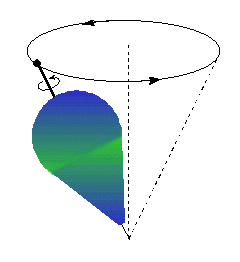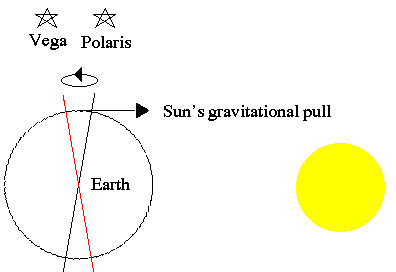

A rapidly rotating top perturbed with a horizontal force,
will wobble off axis, sweeping out a wide cone. 
|
The gravitational force of the Moon and Sun on the Earth's
slightly bulged equator has the same effect. 
|
|
If you aim a camera at the North Star, Polaris,
and leave the shutter open all night long, we see the TRUE NORTH CELESTIAL
POLE is not quite at Polaris.
In fact, we are quite lucky there is a star even close to this spot. The position of TRUE NORTH CELESTIAL POLE changes due to precession. The off-axis ANGLE over which the earth rotates stays always the same, 23.5o. But the direction the Earth's North Pole points changes. In 12,000 years, Vega will be our new North Star! A full cycle takes 26,000 years. |

|